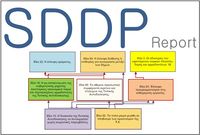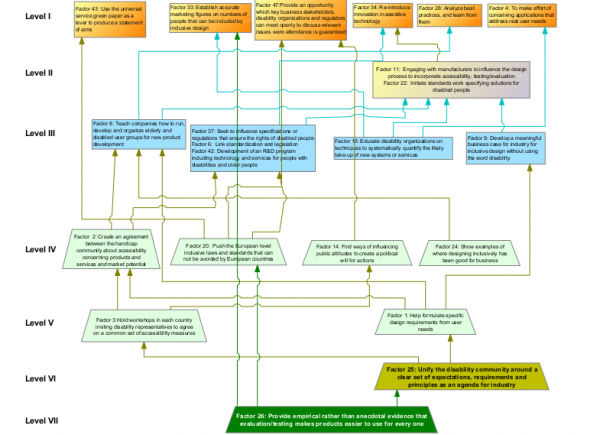SDDP COST 219ter Actions towards developing practical broadband applications
|
Executive Summary
This report has been developed in the context of the COST 219ter project (COST Agreement xxx). The goal of the project is to ...
The Triggering Question (TQ) was
What actions can the Cost219ter community take to alleviate the obstacles that prevent the development of practical applications?
In response to the TQ, the xx participants came up with xx mechanisms, which were categorized in 10 clusters. Following the voting process, xx ideas received one or more votes and were structured to create the influence MAP shown below.
According to the participants of this workshop, the characteristics appear to be the most influential were:
- Mechanism #1, Big delay in decision making from the governmental side
The participants had time to discuss and reflect on the influence map and in general agreed that the arrows in the map made sense to them. In sum, the participants reported their satisfaction that their voices have been heard and documented and communicated their expectations for follow-up activities to address the diagnosis of their needs.
The workshop was facilitated by Elia Petridou, Elena Aristodemou (CNTI), Aleco Christakis and Georgina Siitta Achilleos (CNTI).

